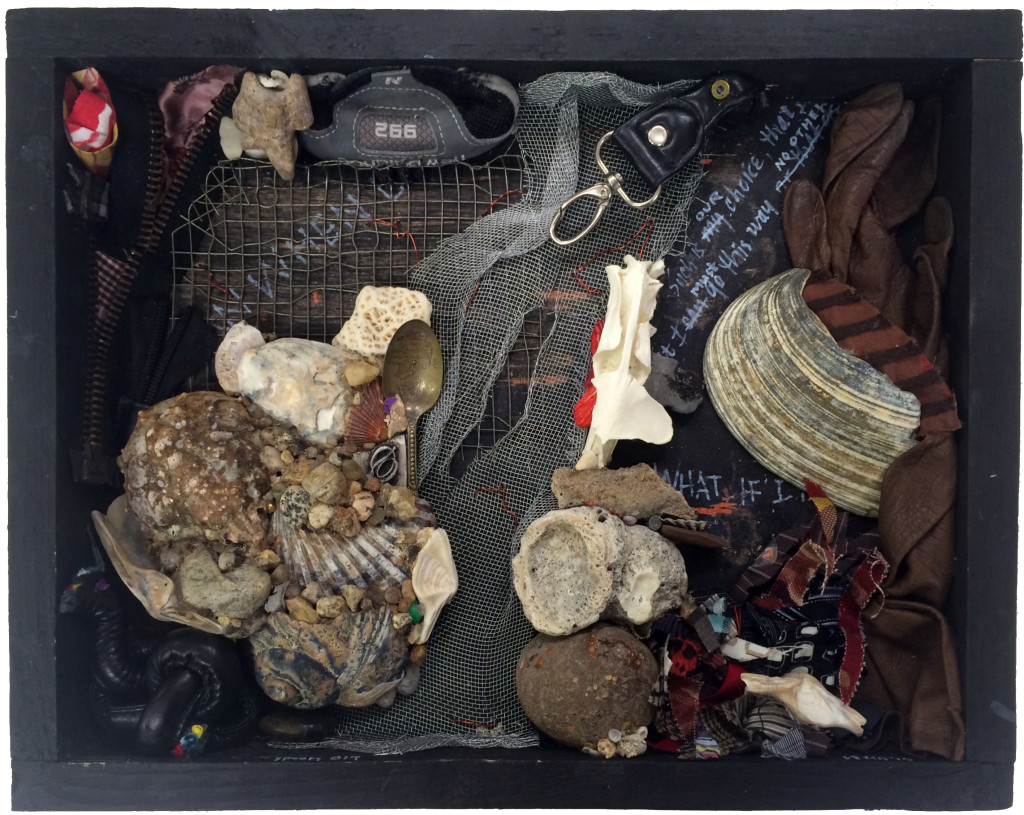
2015
11″ x 14″ x 2″
spoon, shell and mixed media
View all Spoon to Shell sculpture on LindaStein.com
Artist Statement:
The Spoon:
“In Birkenau, Leah resisted the temptation of accepting a spoon from a Polish prisoner, a maintenance man in Camp C, when she understood that in return for the gift she would have to have sexual relations with him. She made this choice in spite of the fact that a spoon was literally a lifesaver in the camps. Without it one had to drink soup from the same vessel as everyone else, risking exposure to contagious diseases such as tuberculosis.” Referring to sexual abuse Leah said:
On that topic . . . I have zero knowledge. I know nothing. Immediately afterward, she spoke about the traumatic meeting with a Polish maintenance man who offered her a spoon in exchange for sex. She said: I open–a spoon. I say: I’m so grateful to you. . . .Then he asks me: When will we meet? I then comprehend what it is about and I throw the spoon at him and run off. I was afraid he’s chase me, because he was really angry. but right away he found someone else who agreed.
Esther Dror and Ruth Linn (2010): The Shame Is Always There.
In: Rochelle Saidel & Sonja Hedgepeth (Eds.) Sexual violence against Jewish women
during the Holocaust. (pp. 275-291). Waltham, M.A: Brandeis University Press
I can’t get Leah (and all the other Leahs) out of my head. What must it have been like to desperately want to survive with your self-respect intact? How impossible. It’s understandable that women like Leah did not want to revisit the shame, ostracism, rejection, and even worse, associated with sexual abuse.
For me, the spoon has forever become a metaphor: a symbol of protection and nourishment, yes; but also an image that brings to mind the impossible choice that many women faced during these times.
The Shell: Along with the spoon, I see the shell as another metaphor for protection: a hard protective outer covering; a mask or camouflage of true feelings; an outer form emptied of its innards, as in “the building was a shell, the roof having collapsed completely” or “she was a shell of the woman she had previously been.” Sometimes the shell refers to “an inner or roughly made coffin” or “the hand guard of a sword.” More confrontationally, the shell can be “an explosive artillery projectile or bomb” or “a hollow metal or paper case used as a container for fireworks, explosives or cartridges.”
Mulling around these various meanings and images, brought forth by the spoon and shell in the context of women in the Holocaust, I found myself creating this series of box sculptures which combine shell and spoon within an amalgam of mixed materials, words and associations.
